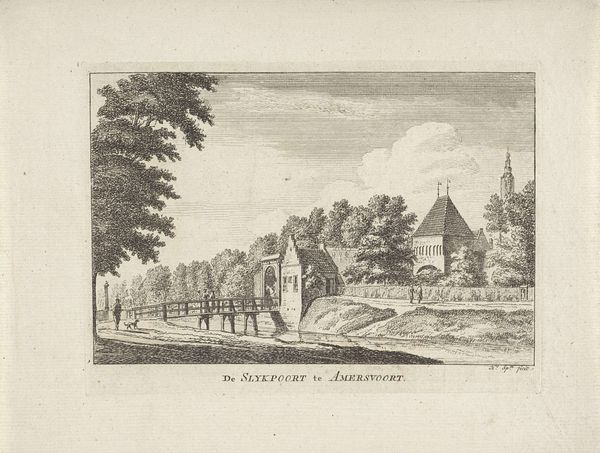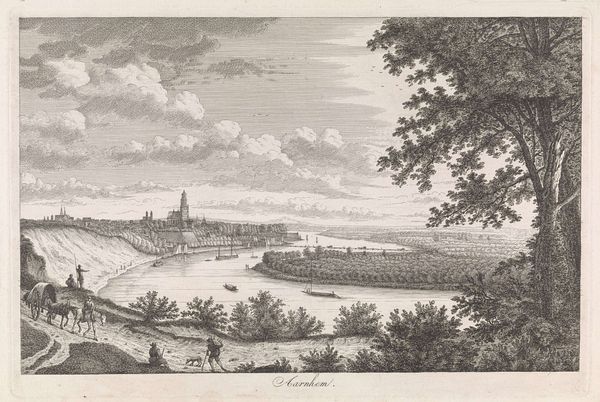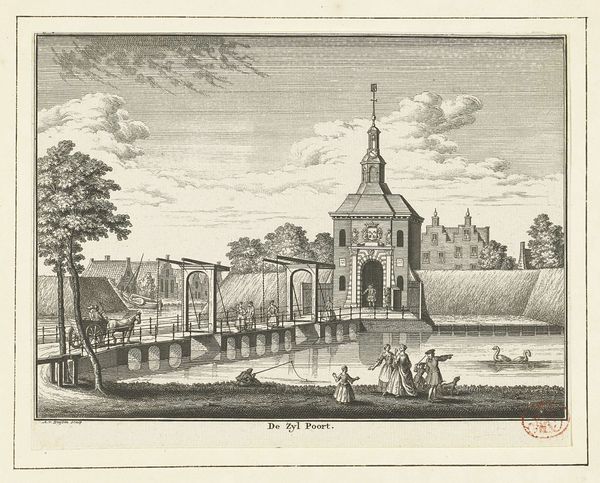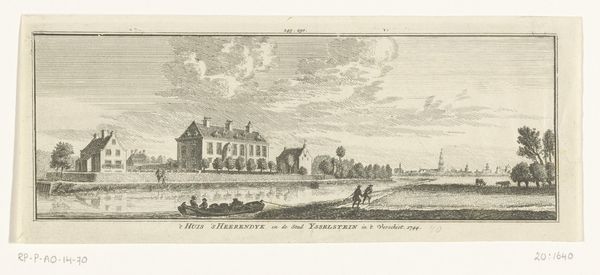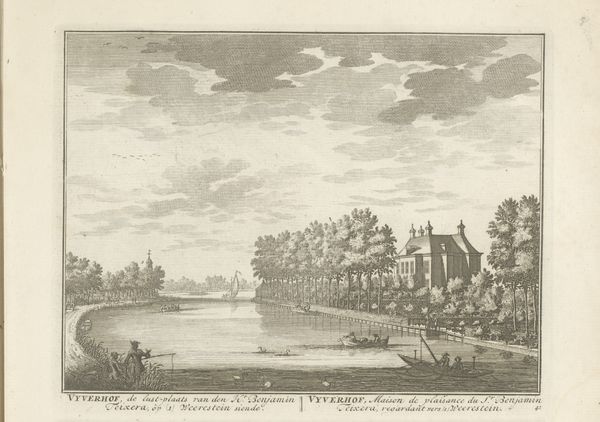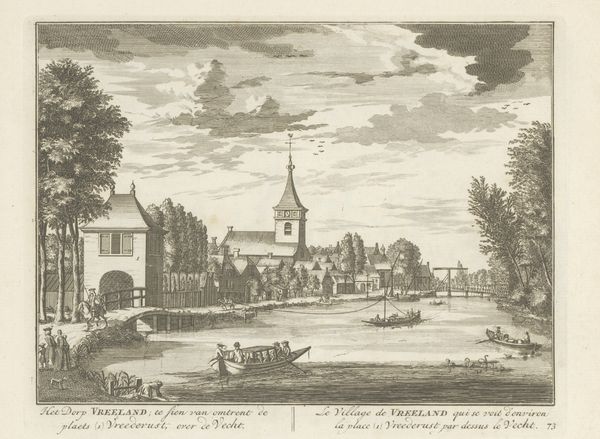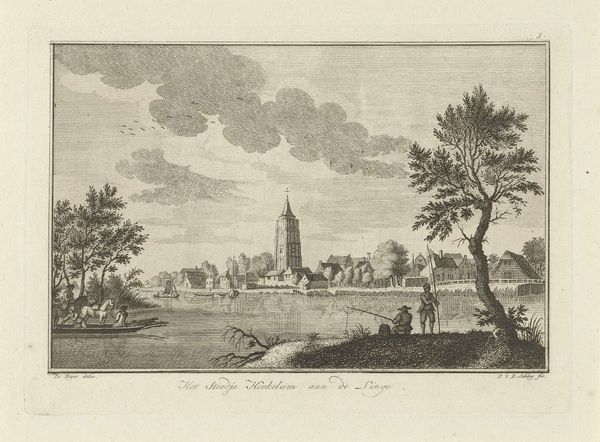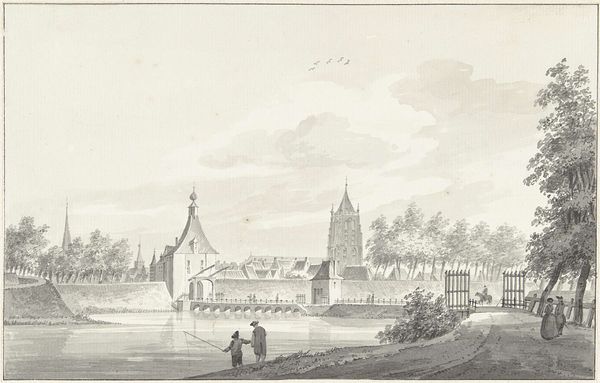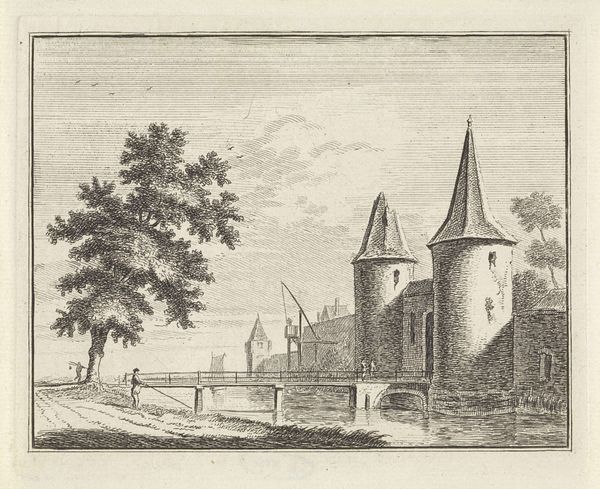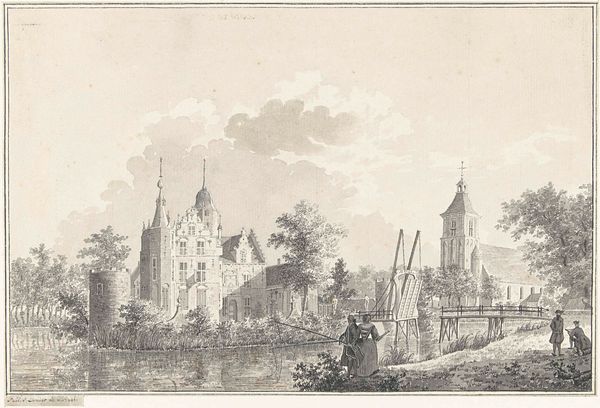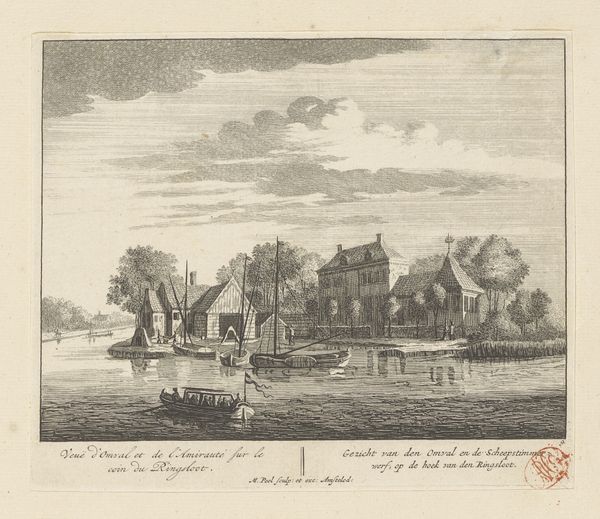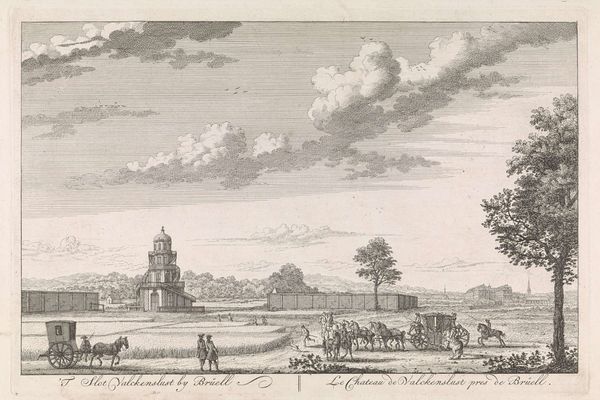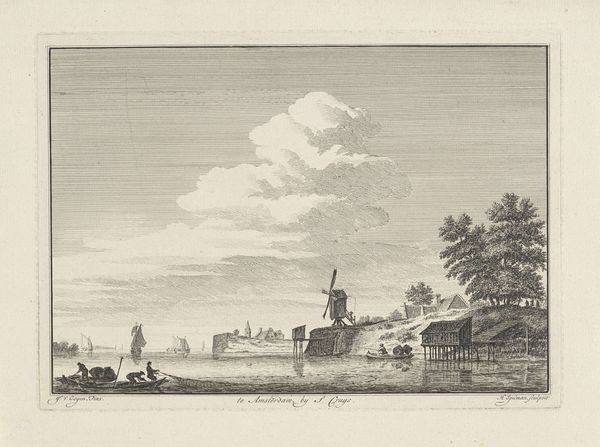
print, engraving
#
dutch-golden-age
# print
#
landscape
#
engraving
Dimensions: height 180 mm, width 218 mm
Copyright: Rijks Museum: Open Domain
Hendrik Spilman created this view of Abcoude castle in the 18th century using engraving, a printmaking technique with a rich history. The process begins with a metal plate, usually copper, into which the artist meticulously carves a design using a tool called a burin. Spilman would have employed different burins for different line thicknesses, giving depth to the image. Once the design is complete, ink is applied to the plate, filling the engraved lines. The surface is then wiped clean, leaving ink only in the incised areas. Finally, damp paper is laid on the plate, and both are run through a press under high pressure, transferring the ink to the paper and creating the print. The fine lines and intricate details of the clouds, the castle, and the figures on the bridge all speak to Spilman's skill and the labor-intensive nature of engraving. Each line required focused work, illustrating a commitment to craft. Considering the making of this artwork helps us understand the value placed on skilled craftsmanship during the 1700s.
Comments
No comments
Be the first to comment and join the conversation on the ultimate creative platform.
